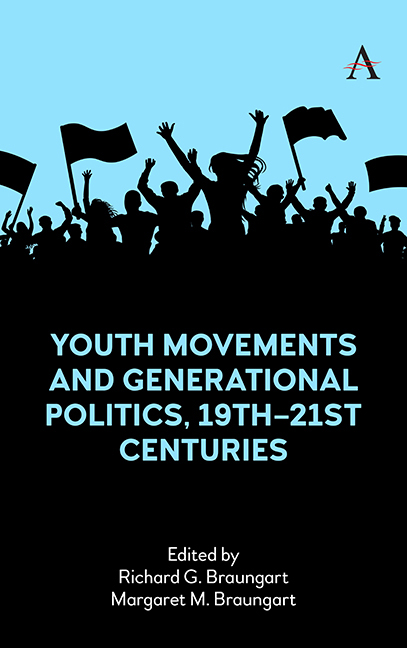2 - Moderate-Extreme and Left-Right Sources of Youth Politics: A Typology
Published online by Cambridge University Press: 18 November 2023
Summary
This study identifies the moderate-extreme and left-right origins of youth politics. Based on the intersection of two factors or axes, a conceptual model is constructed having four distinct political types: moderate left, moderate right, extreme left, and extreme right. The four-celled typology is tested on three large samples of youth collected in 11 countries during the 1960s. Results suggest that youth politics operates within a relatively predictable moderate-extreme and left-right political framework, and the exact configuration of youth politics resembles a curvilinear, arch-shaped pattern, with both moderate left-right and extreme left-right youth and youth groups sharing many features in common. Study results offer opportunities for further historical, generational, and global comparisons.
The political process contains ideas that both maintain and transcend the existing social order. Moderate forms of politics are acceptable to the majority of citizens because they do not threaten or undermine the institutions and beliefs that sustain society. Political moderation typically is represented by competing groups that wish to participate in society, not drastically change it. Political extremism, on the other hand, may be characterized as sets of ideas directed at criticizing the existing social order and generating political activity toward transforming society into some preconceived notion of the best society. Radical political extremists are willing to renovate antagonistic political forms as they strive for power, authority, and fulfillment in a new order that replaces the old. Another way of differentiating moderate and extreme sources of politics is to note that political moderates embrace a “tender-minded” style of politics, while political extremists prefer a “tough-minded” approach to politics (Converse, 1964; Levinson, 1964; Hampden-Turner, 1970; Inglehart, 1977; Simpson, 1977; Rothman and Lichter, 1982).
The rise of liberal and conservative politics was in part the result of the collapse of the medieval estate system. Conceptions of liberal or “left” and conservative or “right” styles of thought grew out of the 1789 French National Assembly that held its meeting in a large horseshoe-shaped amphitheater in Paris. The seating arrangement at the Assembly gave rise to the use of directional terms in politics—the conservative party sat to the right of the speaker, the liberal party, in the center, and the radical party, to the speaker's left.
- Type
- Chapter
- Information
- Publisher: Anthem PressPrint publication year: 2023

